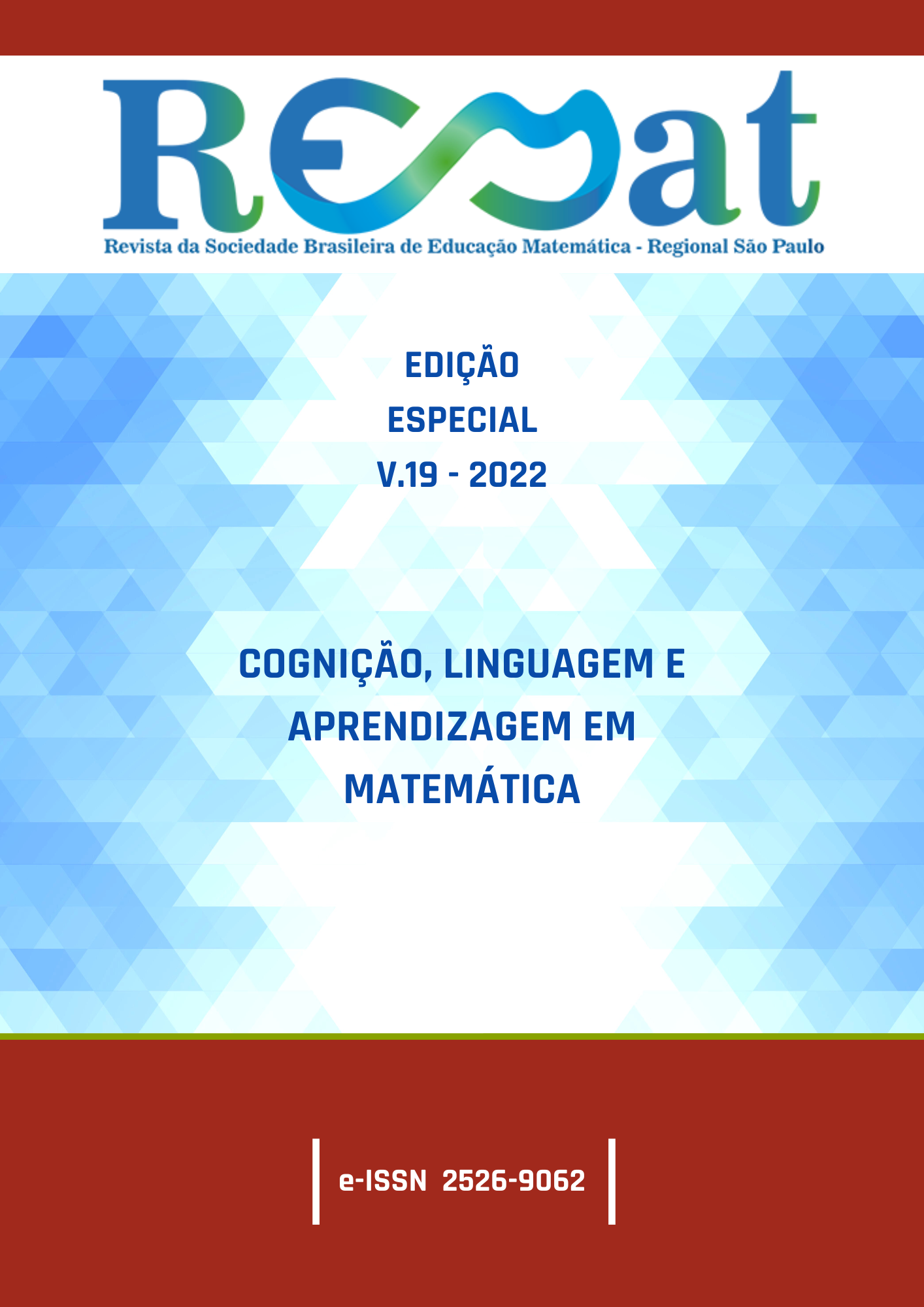Universal Design for Mathematics Learning: A proposal for teaching decimal numbers
DOI:
10.37001/remat25269062v19id688Keywords:
Inclusive Education, Mathematics, Universal Design for LearningAbstract
Understanding education as a fundamental human right for the formation of citizens, it is believed that it is essential that all people, regardless of their differences have access to schools, formal spaces of education, and learn the content provided in the guidelines in force, as provided for in inclusive education. In inclusive education we have the challenge of teaching different students, with different culture, habits, customs, socioeconomic conditions, religion, and different rhythms and ways of learning, resulting or not from disability. Highlighting Mathematics, as an area of knowledge provided for in basic education and the challenges of working its contents with the diversity of students found in schools, this study results from an exploratory qualitative study, which aims to describe a teaching practice for teaching decimal numbers from the perspective of Universal Design for Learning (UDL). UDL recognizes human plurality, and that each person appropriates knowledge in different ways. It has the precept of making the basic curriculum of education accessible and applicable to all students, structured on principles that served as a basis for organizing activities to teach decimal numbers using concrete materials, lessons and practices consistent with the interest and reality of students, in order to stimulate and ensure learning, planning and structuring the teaching action so that it is accessible to all, considering the diversity of students. The elaboration of a proposal for Mathematics activities from the perspective of the UDL demonstrates that to act in diversity, the teacher must focus on the student, organizing activities with resources that stimulate learning, that are contextualized and allow the student to see the applicability of what he learns.
Downloads
Metrics
References
BRASIL. Ministério da Educação. Base Nacional Comum Curricular. Brasília, 2018.
_______. Lei Brasileira de Inclusão nº 13.146 de 2015. Disponível em: http://www.planalto.gov.br/ccivil_03/_ato2015-2018/2015/lei/l13146.htm. Acesso em: 8 Julho de 2021.
COUREY, S. J. et al. Improved lesson planning with universal design for learning (UDL). Teacher education and special education, v. 36, n. 1, p. 7-27, 2013.
D’AMBROSIO, Ubiratan. Sociedade, cultura, matemática e seu ensino. Educação e pesquisa, v. 31, n. 1, p. 99-120, 2005. Disponível em: https://www.scielo.br/j/ep/a/TgJbqssD83ytTNyxnPGBTcw/?format=pdf&lang=pt. Acesso em: 28 Fevereiro de 2022.
FIORENTINI, D.; LORENZATO, S. Investigação em educação matemática: percursos teóricos e metodológicos. Campinas: Autores Associados, v. 3, 2006.
GOMES, A. A. M. e NACARATO, O. M. Pistas, indícios... A comunicação de ideias matemáticas na EJA. REMAT – ISSN 2177 5095, nº 2 2010 –Revista eletrônica de matemática. Disponível em: http/ufg.br/ojs/índex.php/matemática. Acesso em: 18 nov.2021.
LAMBERT, R. Increasing Access to Universally Designed Mathematics Classrooms. Policy Analysis for California Education, PACE, 2020. Disponível em: https://files.eric.ed.gov/fulltext/ED605096.pdf. Acesso em: 18 nov. 2021
LANGLEY-TURNBAUGH, S. J.; WHITNEY, J.; BLAIR, M. Increasing accessibility of college STEM courses through faculty development in Universal Design for Learning. Universal design in higher education: Promising practices. Seattle: DO-IT, University of Washington Retrieved January, v. 29, p. 2019, 2013. Disponível em https://www.washington.edu/doit/sites/default/files/atoms/files/ . Acesso em 18 de nov. 2021
MANZINI, J.E.; Inclusão e Acessibilidade. Revista da Sobama. Dezembro, 2005, Vol. 10, n.1, Suplemento, pp. 31-36.
NUNES, T. et al. Street mathematics and school mathematics. Cambridge University Press, 1993.
PIMENTEL, S.C.; PIMENTEL, M.C. Acessibilidade para inclusão da pessoa com deficiência: sobre o que estamos falando? Revista da FAEEBA: Educação e Contemporaneidade, Salvador, v. 26, n. 50, p. 1-296, set./dez. 2017
PLETSCH, M. D. et al. Acessibilidade e Desenho Universal aplicado à aprendizagem na educação superior. Nova Iguaçu: ObEE, 2020.
ROSE, D. H.; MEYER, A. A practical reader in universal design for learning. Harvard Education Press. 8 Story Street First Floor, Cambridge, MA 02138, 2006.
ROSE, D. H.; MEYER, A.; HITCHCOCK, C. The universally designed classroom: Accessible curriculum and digital technologies. Harvard Education Press. 8 Story Street First Floor, Cambridge, MA 02138, 2005.
ROSE, D.H.; MEYER, A. 2002. Teaching every student in the digital age: Universal design for learning. Alexandria, ASCD, 216 p.
SANTOS, L. et al. Investigações matemáticas na aprendizagem do 2º ciclo do ensino básico ao ensino superior. In: PONTE J. P et al. (Orgs) Atividades de investigação na aprendizagem da matemática e na formação de professores. (p. 83 – 106) Lisboa: SPCE, 2002.
HEREDERO, E.S. Diretrizes para o Desenho Universal para a Aprendizagem (DUA) 23. Revista Brasileira de Educação Especial, v. 26, p. 733-768, 2020. Disponivel em: https://www.scielo.br/j/rbee/a/F5g6rWB3wTZwyBN4LpLgv5C/abstract/?lang=pt. Acesso em: 18 nov. 2021
ZERBATO, A.P; MENDES, E.G. Desenho universal para a aprendizagem como estratégia de inclusão escolar. Educação Unisinos 22(2):147-155, abril-junho 2018 Unisinos.
Downloads
Published
Métricas
Visualizações do artigo: 1405 PDF (Português (Brasil)) downloads: 601
How to Cite
Issue
Section
License

This work is licensed under a Creative Commons Attribution-NonCommercial-NoDerivatives 4.0 International License.


 Português (Brasil)
Português (Brasil)
 Español (España)
Español (España)
 English
English






































